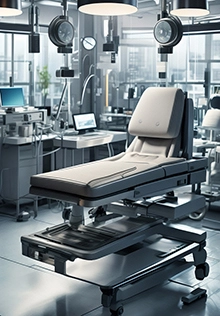Growing Manufacturing Capacity Response Drives Lower Cost Solutions
– Increasing the Reliability of Continuous Work
Powder metallurgy,also known as powder metal,is a metal forming process.The most commonly used are pressed sintering and metal injection molding two processes,powder metallurgy has been developed for more than 100 years,after continuous technological change,sintered parts manufacturing and traditional metal processing methods (metal casting and forging (P/F)) compared to the process being more material-saving and requiring less machining , the production cost of sintered parts is significantly lower than that of the traditional metal forming process.
About Sintered Parts(PM)
What makes sintered parts manufacturing so efficient is the significant reduction in waste throughout the manufacturing process. Zero-waste production and continuous optimization of the manufacturing process, and the absence of secondary processing of parts, make the sintered metal process so environmentally friendly and less costly to produce. Powder metallurgy involves mixing, forming, and sintering at our state-of-the-art production facility in Shenzhen.
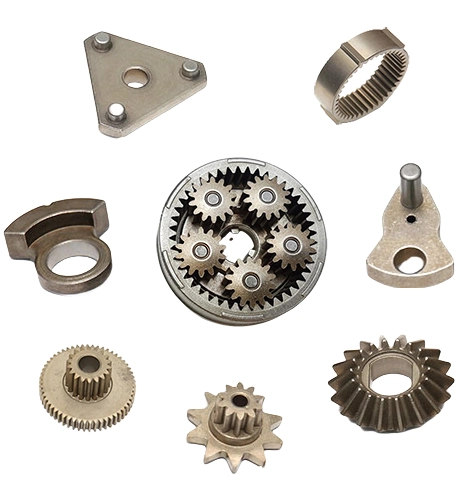
Cost-effective alternative materials
Powder metallurgy can save 30%-50% of material comparedto traditional machining,no post-processing is required.It is a very cost-effective alternative with good surface finish and high dimensional accuracy.It has a huge advantage over traditional machining methods such as casting,and milling.
Advantages of powder metallurgy
* However, in some cases, the use of other machining processes would be more appropriate:
- Prototypes or very small quantities of parts:Prototypes or small production runs require molds to be made first, which can be more expensive for each part.
- Very short delivery times: Either the PM process or the MIM process requires one or more new molds, which takes extra time to make the molds.
- Large parts: Parts that weigh more than 150 grams or have a diameter of more than 5 inches are more difficult to produce, and therefore these parts are more costly.
Based on the above, it may be more effective to use a precision machining process.Precision machining is ideal for prototyping and small batch production, allowing you to test and bring your project to market faster.
Simple manufacturing process for powder metallurgy
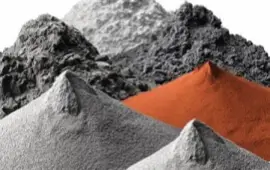
Stainless steel-based, Ferrous-based , Copper-based Alloys: Steel, Brass, Bronze, and more Composites: metals & non-metallic combinations Metal raw materials are processed into fine metal powders. These metal powders have a uniform particle size and high purity and providing a good basis for subsequent processing. Our engineers add the correct proportion of polymers, such as lubricants, graphite, etc., for your application.
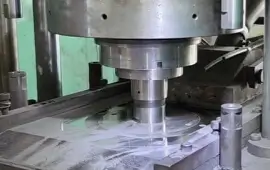
The specially formulated metal powder is automatically fed into a precision mold and compacted into the desired shape under 500~600MPa pressure. The pressed workpiece is then automatically fed into the sintering furnace for the next step in the process, making your product stronger.
When it comes to compacting, we offer multiple multi-action presses, ranging from 45 to 1000 tons.
Sintering, which takes place in a sintering furnace at a temperature of 2,600° F, is a series of physicochemical processes that occur between powder particles through diffusion, recrystallization, fusion welding, fusion, dissolution, and other physical and chemical processes, resulting in a metallurgical product with a certain degree of porosity. It is then cooled to provide the strength and properties needed for your powder metal parts.Sintering Process

Generally sintered workpieces can be used directly without subsequent processing. We offer additional surface finishing programs to reduce your time-to-market.
-Finishing Options Include: Extrusion, hardening, Heat Treating,oil immersion, Powder Coating and Laser Engraved Surfaces,many more.
Reducing Waste Emissions
Animportant choice for sustainability.
Powder metal fabrication technology is an efficient and sustainable way to provide a quality solution for your application. By using powder metal, we are able to minimize material waste and reduce costs to deliver highly accurate parts.
Reducing energy consumption and waste generation reduces the negative impact on the environment.
We are committed to using state-of-the-art technology and processes to ensure you get the best powder metal fabrication solution. No matter the size of your project, we can provide expert support and assistance to ensure your success.
Saving on materials will also reduce your operating costs.

Powder metallurgy components excel for a wide range of application markets
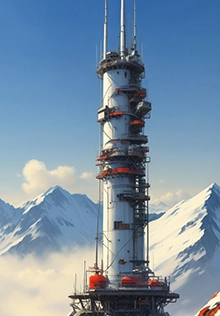
transmission gears,linkages,planetary gear drives,steering components,powertrain components.

sintered pistons,connecting rods,bushings,bearings,small engine,transmission gears,transmission gearbox,powertrain components.

Electronic heat sinks,electronic connector hardware,industrial tools, consumer electronics,fiber optic connectors,actuators.

Handheld power tools,chainsaws, hand drills,sanding machines,cutting machines,impact drills.
Quality Control
Quality Assurance
No Additional Management Required
Learn about a more efficient and precise metal injection molding process that creates complex geometries?
Metal Injection Molding (MIM) combines the design flexibility of plastic injection molding with the strength and durability of metal materials to obtain low-cost, shaped metal parts by molding plastics, and is currently a popular choice in the automotive, power tool, aerospace, and medical industries.


